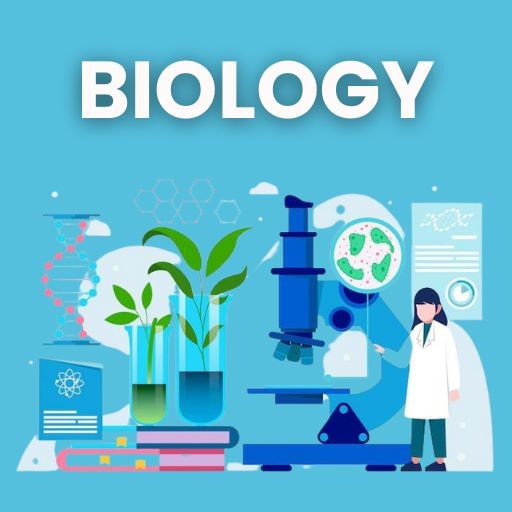Protoplasm | Biology for ACT PDF Download
| Table of contents |

|
| Introduction |

|
| Physical Properties of Protoplasm |

|
| Chemical Nature of Protoplasm |

|
| Compounds of Protoplasm |

|
Introduction
Protoplasm is the living part of the cell, which comprises of different cellular organelles. It is a jelly-like, colourless, transparent and viscous living substances present within the cell wall. The term protoplasm was proposed in the year 1835 and is known as the primary substance, as it is responsible for various living processes.
J.E. Purkinje, 1840 observed similar substances in plant cells and coined the term ‘Protoplasm’.
 Protoplasm
Protoplasm
Physical Properties of Protoplasm
- Protoplasm is a translucent, odourless and polyphasic fluid.
 Cell Protoplasm
Cell Protoplasm - Protoplasm is a crystallo-colloid type of solution. Protoplasm is a mixture of such chemical substances among which some form crystalloid i.e. true solution (Sugars, Salts, Acids, Bases etc.) and others which form colloidal solutions (Proteins, lipids etc.)
- Size of colloidal particles (0.001 to 0.1 mm) is between true solution and suspension.
- Colloidal systems composed of two stages.
(i) Dispersion phase or continuous form or intermicellar and
(ii) Dispersed phase or discontinuous phase or Micelles.
Chemical Nature of Protoplasm
Approximately 34 elements participate in the composition of protoplasm but only 13 elements are main or universal elements in protoplasm i.e. C, H, O, N, Cl, Ca, P, Na, K, S, Mg, I, Fe.
Carbon, Hydrogen, Oxygen and Nitrogen from the 96% part of protoplasm.

Rest of the elements of protoplasm occur in very small quantity (0.756%). These are, therefore called Trace elements. These include Copper, Cobalt, Manganese, Zinc, Boron, Vanadium, Chromium, Tin, Silicon, Fluorine, Molybdenum, Nickel, Selenium, Arsenic.
Compounds of Protoplasm
Although some elements occur in protoplasm as free ions but mostly two or more elements are combined to form different kinds of compounds.
Inorganic Compounds
1. Water = 70-90 %
2. Salt, acids, bases, gases = 1-3%
Organic Compounds
1. Proteins = 7-14%
2. Lipids = 1-3 %
3. Carbohydrates = 1-2%
4. Nucleic acids, enzymes and other = 1-3%
Water
(1) It is a Best solvent in nature, it forms the matrix of protoplasm. All other constituents of protoplasm are its solutes.
(2) Being an ideal dispersion medium, it causes Brownian movement of colloid particles, resulting into their collision and mutual bombardment. This facilitates relativity between the various compounds necessary for maintaining protoplasm in live state.
(3) It causes streaming or cyclosis in protoplasm, facilitating its chemical exchange with the environment and transportation of solutes from one part to the others.
(4) It itself participates in certain types of chemical reactions, particularly in the hydrolytic breakdown of complex compounds.
(5) Having a high specific heat, it minimizes temperature variations and thus protects protoplasm against ill effects of sudden rise or fall of temperature in the environment.
(6) Of total water, 95% water is free water and 5% water occurs as bound water.
(7) Water – Human body – 65-70% of total body weight.
(8) Human body = 40 litre :
55% (22 litre) – intracellular fluid
45% (18 litre) – extracellular fluid
(9) Animal kingdom – Hardest material: Enamel
(10) Plant kingdom – Hardest material: Sporopollenin
Salts
(1) Salts in protoplasm occur in ionised form. These ions are responsible for electric conductivity, rendering protoplasm irritable and response to environmental changes.
(2) These provides linkage or chemical bonds in many chemical reactions. Such type of linkage called Salt linkage.
(3) Some metallic and other ions such as Mg, Fe, Zn, Mo, Mn etc. act as cofactors in enzymatic activities.
(4) These regulate the osmotic pressure and chemical exchange of protoplasm from its environment.
(5) Some ions also act as co-factor :
- Zn+2 – carbonic anhydrase
- Fe+2 – Aconitase, catalase
- Cu+2 – Tyrosinase [CBSE 2004]
- Mo – Nitrogenase
- Mg+2 – Co-factor of many respiratory enzymes like Kinase, Enolase, Dehydrogenase
- Ni – Urease enzyme
(6) Some other functions of ions:
- Na+ , K+ ions – Nerve induction
- Ca+2 , Mg+2 ions – Muscles contractions, Reduce more excitability of nerves and muscle.
- Ca+2 ion – Blood clotting, Bone formation, Most abundant mineral element in the animal body
- Na+, K+ ions – Main component of ringer solution.
- K+ ion – Helpful in seismonastic movement, stomatal opening and closing.
Acids and Bases
These prevent pH variations by forming a buffer system in protoplasm, for e.g. carbonic acid-Bicarbonate buffer system.

 |
Download the notes
Protoplasm
|
Download as PDF |
Old NCERT Syllabus
Facts about Protoplasm
- The origin of the word protoplasm was from a Greek word (Protos = first, Plasma = organization).
- Protoplasm was first observed by Corti in 1772.
- Felix Dujardin, 1835 observed a jelly-like substance in animal cells (protozoa) and gave the name ‘Sarcode’.
- J.E. Purkinje, 1840 observed similar substances in plant cells and coined the term ‘Protoplasm’.
- Hugo Van Mohl, 1846 studied the nature of protoplasm present in the embryonic cell of plants and explained the importance of protoplasm in cell division.
- Max Schultze, 1861 established similarity between sarcode and protoplasm. Schultz proposed the protoplasm theory (the name given by O. Hertwig). Max Schultz firstly told that protoplasm is the physical basis of life.
- J.S. Huxley, 1868 wrote a book ‘‘Protoplasm is the physical basis of life’’
- Rinke and Rodewald, 1881 first all performed the chemical analysis of protoplasm.
Physical Nature of Protoplasm
Several theories are proposed to explain the physical nature of protoplasm.(1) Alveolar theory- ''Butschli'' (1892). Protoplasm is a foamy emulsion consisting of bubbles of high-density fluid.
(2) Granular theory- ''Altman'' (1893). Fine granules are homogeneously distributed into the homogenous medium of the Protoplasm. Granules were termed as ''Bioplast or Cytoplast''
(3) Fibrillar theory- ''Flemming,'' (1894). Microscopic filaments (Micelles or mitomes) like structures are dispersed in a liquid matrix (Paramitome or Hyaloplasm).
(4) Reticular theory- ''Hanstein, Klein and Carnoy,'' (1898) Protoplasm is a mesh work of microscopic filaments.
(5) Colloidal theory- ''Fisher 1894, Hardy'' 1899 and ''Wilson'' 1925.
This is most acceptable theory for protoplasm. According to this theory, the protoplasm is a Polyphasic Colloidal System.
Type of Colloids
On the basis of dispersion and dispersed phases there are four types of colloids-
- Sol = Dispersion phase is liquid and dispersed phase is solid. In sol stage, protoplasm is less viscous. Protoplasm in sol stage occurs in majority of living cells.
 Sol
Sol - Gel = Dispersion phase is solid and dispersed phase is liquid. Protoplasm is more viscous e.g. Skin Cells.
- Emulsion = Both stages are liquid i.e. fluid colloidal particles are dispersed in a liquid matrix e.g. blood plasma composed of both sol and emulsion.
- Aerosol = solid particles remain suspended in gas e.g. smoke. Aerosol does not occur in living system.
- Protoplasm mainly composed of either sol or gel.
- Sol stage provides cyclosis, Brownian movements and high reactivity to protoplasm.
- Gelation of protoplasm provide elasticity, contractibility, rigidity and viscosity.
- Colloid particles have electric charge and due to charges these remain in a continuous random motion, called Brownian movement.
- Environmental conditions like temperature, pressure and pH cause changes in the properties of protoplasm. This change bring endocellular movement of protoplasm called cyclosis.
- Browninan movement and cyclosis are more, significant in sol stage of protoplasm.
- Being a liquid mixture, the protoplasm has a surface tension. Solutes (Proteins and lipids) having less surface tension, form a delimiting membrane at surface. This membrane is called interface membrane (Plasma membrane). Interface membrane has power of rapid generation.
- Being colloid, protoplasm exhibits ''Tyndal effect'' i.e. Scattering of incident light rays. If colloidal particles are large, then white and if they are small then blue light is observed.
- Sol and gel stages of protoplasm are interconvertible so the proptoplasm is a reversible colloidal system. Non living colloids are irreversible.
- Ageing-with age, charges of colloid particles diminishes, brownian movements stops so ultimately it becomes non reactive (death of protoplasm).
- Viscocity of protoplasm = 2 – 20 centipoises
- pH = 6-8
- Refractive index = 1.4
Biological Properties of Protoplasm
Protoplasm is a living substance so it possess biological properties also.
- Protoplasm has motion because of cyclosis, amoeboid and Brownian movement. These movements depend on age of cells, amount of water, genetic factors and chemical composition of protoplasm.
- Protoplasm exhibits irritability when provided stimuli.
- Sensitivity of protoplasm to external stimuli is called irritability. Transmission of stimuli from one place to another is called conductivity.
- Besides irritability, conductivity also occurs in protoplasm of many cells. e.g. Nerve cells, muscle cells etc.
- Different chemical reactions takes place in protoplasm. Constructive reactions are called Anabolic processes like synthesis of different types of biomolecules. Destructive reaction like oxidation of food called catabolic processes. Anabolic and Catabolic Processes collectively called metabolism.
- Protoplasm has the capacity to take external material and resynthesize them in a new form (assimillation).
- Respiration and excretion
|
208 videos|226 docs|136 tests
|
FAQs on Protoplasm - Biology for ACT
| 1. What is the physical nature of protoplasm? |  |
| 2. What are the physical properties of protoplasm? |  |
| 3. What are the biological properties of protoplasm? |  |
| 4. What is the chemical nature of protoplasm? |  |
| 5. What are the compounds found in protoplasm? |  |





























